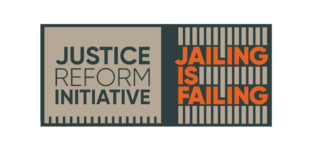Jailing Is Failing: An Interview With the Justice Reform Initiative’s Dr Mindy Sotiri

With 12,707 adults incarcerated in the NSW prison system last September, this state continues to be the greatest incarcerator in the country.
Although, NSW crime rates – especially those involving property – have been dropping since the 1970s, with this becoming more pronounced from the turn of the century.
Successive state governments of both persuasions, however, haven’t seen this as an opportunity to invest elsewhere. Rather channelling funds into this state’s correctional facilities has become a favoured pastime for parliamentarians.
The Baird government announced a $3.8 billion four year funding package in 2016 to increase the capacity of this state’s correctional facilities by 7,000 beds. Prisons were expanded, new facilities were built, while others were repurposed.
This pet project of former NSW corrections minister David Elliott didn’t include the 1,700 beds contained in the nation’s largest prison: the recently opened, Serco-run Clarence Correctional Centre, located south of Grafton.
And nor does it include the plans for a new 1,000 bed facility, slated for the Sydney industrial suburb of Camellia.
So, who’s filling those beds?
The thing is a fall in crime isn’t that much of an issue in terms of finding inmates. NSW authorities have always been able to fill the beds in this state’s correctional facilities, and much of the time this is to overflowing.
To be sure, the expanded NSW prison system will soon once again be filled to the brim.
A key factor is keeping prisons full is the fact that once an individual gets caught up in the criminal justice system, it becomes a revolving door. Indeed, despite prisons being promoted as places of rehabilitation, around 40 percent of NSW inmates are reconvicted within 12 months of release.
Another disturbing factor of how prisons operate in this state, as well as throughout the entire country, is that they’re being used to warehouse disadvantaged populations: the poor, the unemployed, the homeless, and people living with mental illnesses and cognitive disabilities.
And any discussion of the Australian prison system isn’t complete without mentioning the grave systemic racism that pervades it, which leads Aboriginal and Torres Strait Islander people to be the most incarcerated people on Earth.
Reforming the system
So, that’s where the Justice Reform Initiative comes in. It’s comprised of a vast array of notable Australians from a spectrum of political persuasions aligned in their commitment to reforming the way this nation deals with disadvantage and crime, so it’s no longer overly reliant on incarceration.
The recently established JRI appointed Dr Mindy Sotiri as its executive director in November. Sotiri has worked in the criminal justice sector for over two decades, with a long stint as program director at the Community Restorative Centre.
Sydney Criminal Lawyers spoke to Dr Sotiri about the nation’s predilection for incarceration, the way the initiative seeks to change attitudes both within parliaments and communities, and the exceptional group of patrons calling for prison reform.

Firstly, the tagline of the Justice Reform Initiative is “jailing is failing”. How would you describe the state of the Australian criminal justice system today in terms of achieving its stated aims?
The overuse of imprisonment is, without a doubt, one of the greatest failures of our justice system.
Jailing is failing on lots of different levels, but it’s certainly failing in achieving its key crime control objectives.
It’s failing in its ability to deter. It’s failing in terms of protection of the community. It’s failing in its ambition to rehabilitate.
What we’ve currently got is a justice system that over-imprisons people, who come from backgrounds of extreme disadvantage.
We know that we over-imprison people with mental illness, people with disabilities, people who have survived domestic violence, people with long histories of trauma and histories of poverty. We clearly over-imprison Aboriginal and Torres Strait Islander communities.
And we imprison way too many people who pose no danger or threat to the community.
We also know that when a person goes to prison, it’s really easy to get stuck in a cycle of incarceration, homelessness, poverty and reoffending, with very few pathways out of the justice system.
So, what we can see now is that rather than actually receiving support in the community – for instance, access to housing, drug and alcohol treatment or mental health support – people end up being criminalised and managed in the justice system.
Certainly, from my experience working in post release at the Community Restorative Centre, we also know that people leave prison and return to exactly the same set of circumstances that result in ongoing criminal justice system contact.
So we’re certainly failing the communities we imprison. But the Justice Reform Initiative is saying not only that, we’re also failing the Australian public in terms of the incredible economic cost: the cost to the taxpayer.
We spend around $3.6 billion a year on incarceration in Australia. That’s an incredible cost to taxpayers for a system that doesn’t actually work in terms of any of its stated objectives.
Aboriginal and Torres Strait Islander people are amongst the most incarcerated people on the planet.
While making up 3 percent of the overall population of this country, they make up 29 percent of the adult prisoner population.
What does this tell us about the way the criminal justice system is operating in Australia?
It’s impossible to view the overincarceration of Aboriginal and Torres Strait Islander people through any other lens, except for a lens of systemic racism. And we need to put that front and centre of any analysis.
This racism, of course, has its roots in a long history of oppression and colonisation. And Aboriginal-led organisations, like Change the Record, have really been leading the way in terms of pushing for reform and change on this specific issue.
There are countless reports that have identified what the key drivers of Aboriginal and Torres Strait Islander overincarceration are. And Aboriginal-led organisations have provided very clear roadmaps and guidance to government on how to reduce overincarceration.
So, there are a lot of answers and expertise within Aboriginal and Torres Strait Islander communities, but we’re still very much waiting for a political system that’s actually brave enough to listen, or to hear properly, and to act on some of those recommendations.
The Justice Reform Initiative is a response to this crisis in the system. How did it come to be established? And what are the principles it’s promoting?
The Justice Reform Initiative was formally launched in September 2020, and is a national justice advocacy organisation working to reduce incarceration across Australia.
It was initiated by the work of chair of the JRI, Robert Tickner: former CEO of the Red Cross in Australia and former minister for Aboriginal affairs in the Keating government.
Robert and others have for some time identified the need in Australia for a national justice reform movement that is bi-partisan, and that is able to genuinely engage with parliamentarians to challenge and provide a counterpoint to Australia’s increasing appetite for overincarceration.
And a couple of years ago, Robert began working to bring together an incredibly diverse and large group of people across Australia to drive reform with this vision.
The Justice Reform Initiative now has a network of over 100 Australians as patrons, including two former governor generals, a number of former High Court judges, and former members of parliaments from all sides of politics.
And to answer the question as to what we are all about, the Justice Reform Initiative – working closely alongside other advocates in this space – is seeking to mobilise public opinion in the community and in the parliaments to try and shift government expenditure away from costly and harmful imprisonment and invest instead in the social policy responses to the disadvantage that drives criminal justice system involvement.
The JRI is about bringing public attention to the multiple failures of imprisonment, including the particular failures for specific populations.
We are trying to bring together a diverse group of community and political alliances to formulate responses and to genuinely divert criminalised populations away from the justice system.
So, practically speaking, how does JRI plan to go about achieving its aims?
We are working to build a broad and bi-partisan movement around the idea that ‘jailing is failing’.
We are looking to do this politically by engaging with parliamentarians, in the community by building an outward facing public education campaign, and at a grass roots level, by working with the many organisations and individuals who are already deeply engaged in working to effect justice system reform.
We also are working with researchers and community-based experts, including people with lived experience of incarceration, to build an evidence-based alternative vision.
We have patrons and supporters in each of the states and territories who have specific expertise in key areas of justice reform.
Prisons are, of course, run by the state and territory governments, so alongside the national Jailing is Failing movement, we are also looking to build campaigns across Australia that are geographically and politically relevant to each jurisdiction.
Would you say the breakdown we’re seeing within the Australian justice system is something that we’re witnessing in other comparable western democracies operating under the same principles?
Australia is certainly not alone, in terms of our appetite for incarceration.
I think we’ve learnt from the United States, which is a masterclass in the disaster of mass incarceration. Although we’ve also started, of course, in recent years to see a shift in the US towards a bi-partisan movement towards decarceration.
But, in Australia, we’re actually over-imprisoning more than in a number of other comparable countries within the OECD.
Our imprisonment rate is much higher than countries like Japan, Iceland, Finland, Ireland and Germany.
And there are certainly places that we can look to for how to do things differently.
For instance in the Netherlands there’s a really moderate approach to the use of imprisonment, a real recognition of both the harms of incarceration, and the importance of ensuring if people are incarcerated that they have access to meaningful support both in prison, and on release.
Australia would do well to learn from places like the Netherlands that have managed to significantly reduce their prisoner populations.
As you’ve already mentioned, the JRI alliance includes a diverse team and range of patrons. Indeed, people might be surprised by some of those onboard.
Who would you point to as indicating that the push for criminal justice reform is becoming more of a mainstream concern?
The strength of the initiative is the diversity of the patrons. The fact that the two co-patrons-in-chief are both former governor generals of Australia exemplifies this.
We’ve got Sir William Deane and Dame Quentin Bryce as co-patrons-in-chief.
We’ve got Mick Palmer, the former commissioner of the Australian Federal Police.
We’ve also got representatives from victims’ groups, and we’ve got a number of serving and former prosecutors from a couple of jurisdictions.
Patrons also include Aboriginal and Torres Strait Islander leaders who have worked for decades advocating for justice system reform.
All of the patrons – regardless of their backgrounds – have a deep knowledge of the inadequacies of the justice system, and a strong desire to address these.
I think the diversity of the patrons highlights the fact that Australia’s failure in terms of incarceration, is really something that cuts across political lines.
And lastly, with the reawakening of the Black Lives Matter movement over the last six months, ideas like prison abolition and defunding the police, which are usually relegated to the margins, have started to be approached in the mainstream.
In your opinion, Dr Sotiri, where are initiatives like JRI taking us? What’s your vision of how society will be dealing with the issue of crime in the future?
JRI is joining an incredible group of advocates and organisations who are working to bring about justice reform. And the energy behind a number of the more recent justice related movements is exciting in terms of increasing the likelihood of bringing about much needed change.
I guess for JRI, it’s really about recognising – alongside these other movements – that we cannot continue to use imprisonment to respond to social issues.
We cannot continue to believe it is possible to imprison our way to a safer society. And we need to recognise that we certainly can’t train people for freedom by holding them captive.
It’s about recognising that our current use of imprisonment is failing, and it’s time to start genuinely looking for alternatives, including genuinely responding to the social and economic drivers of crime, and ultimately ending our reliance on imprisonment to respond to disadvantage.







